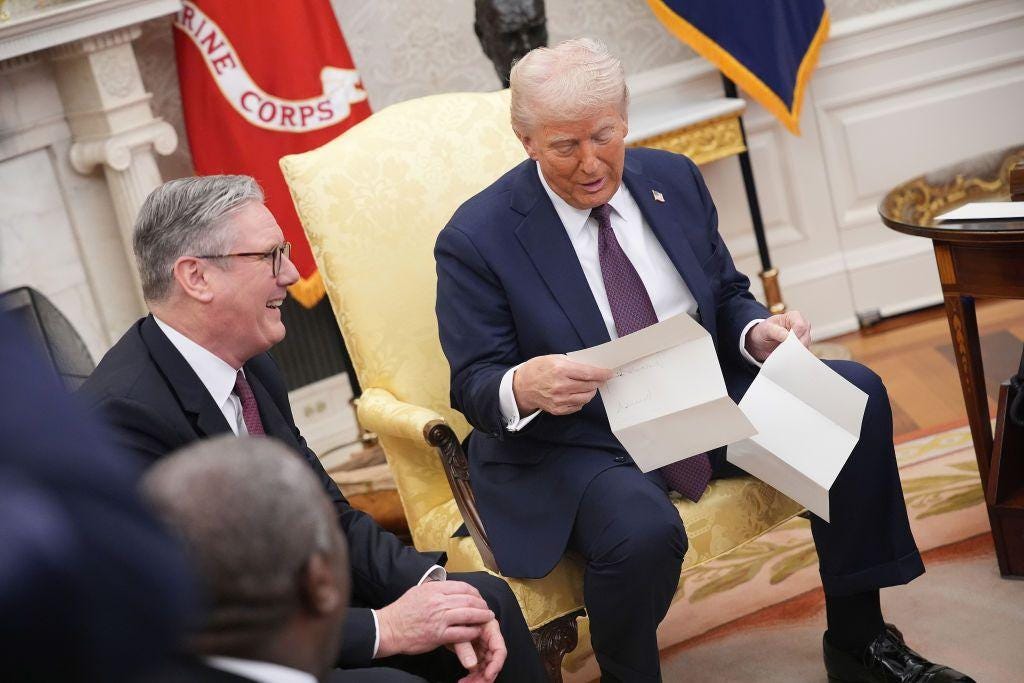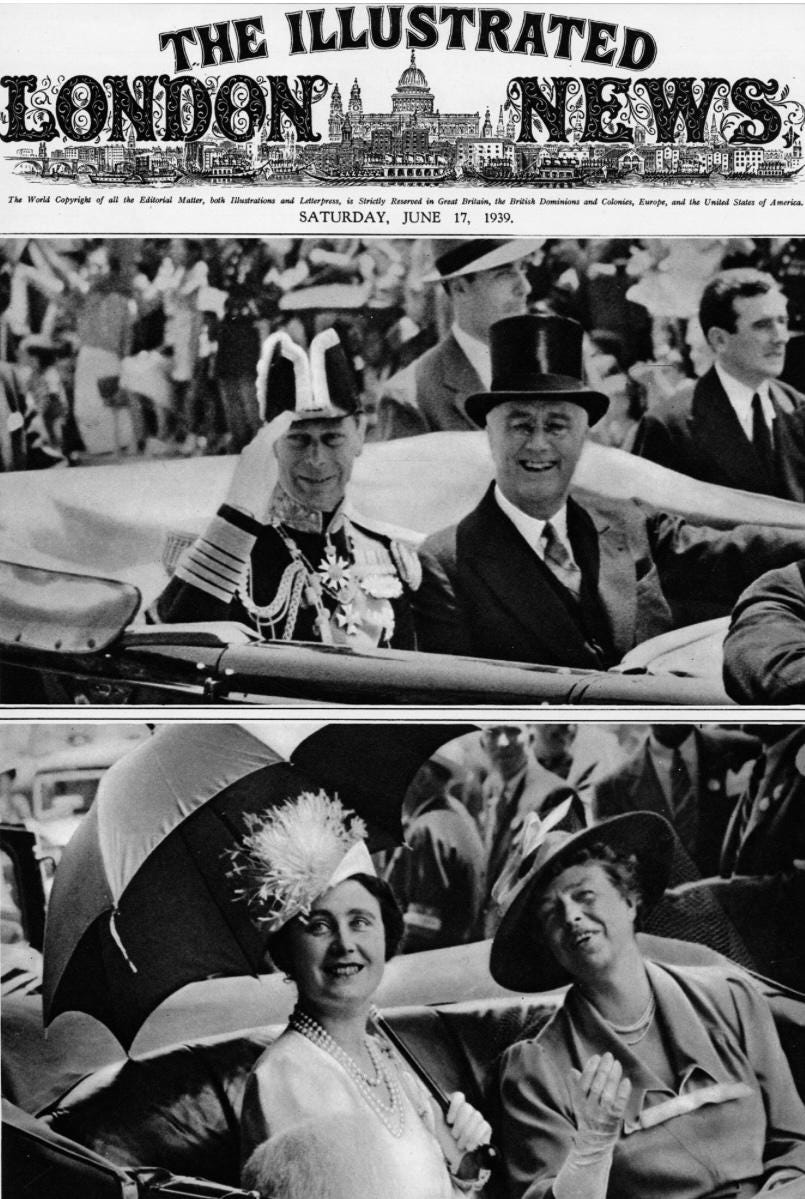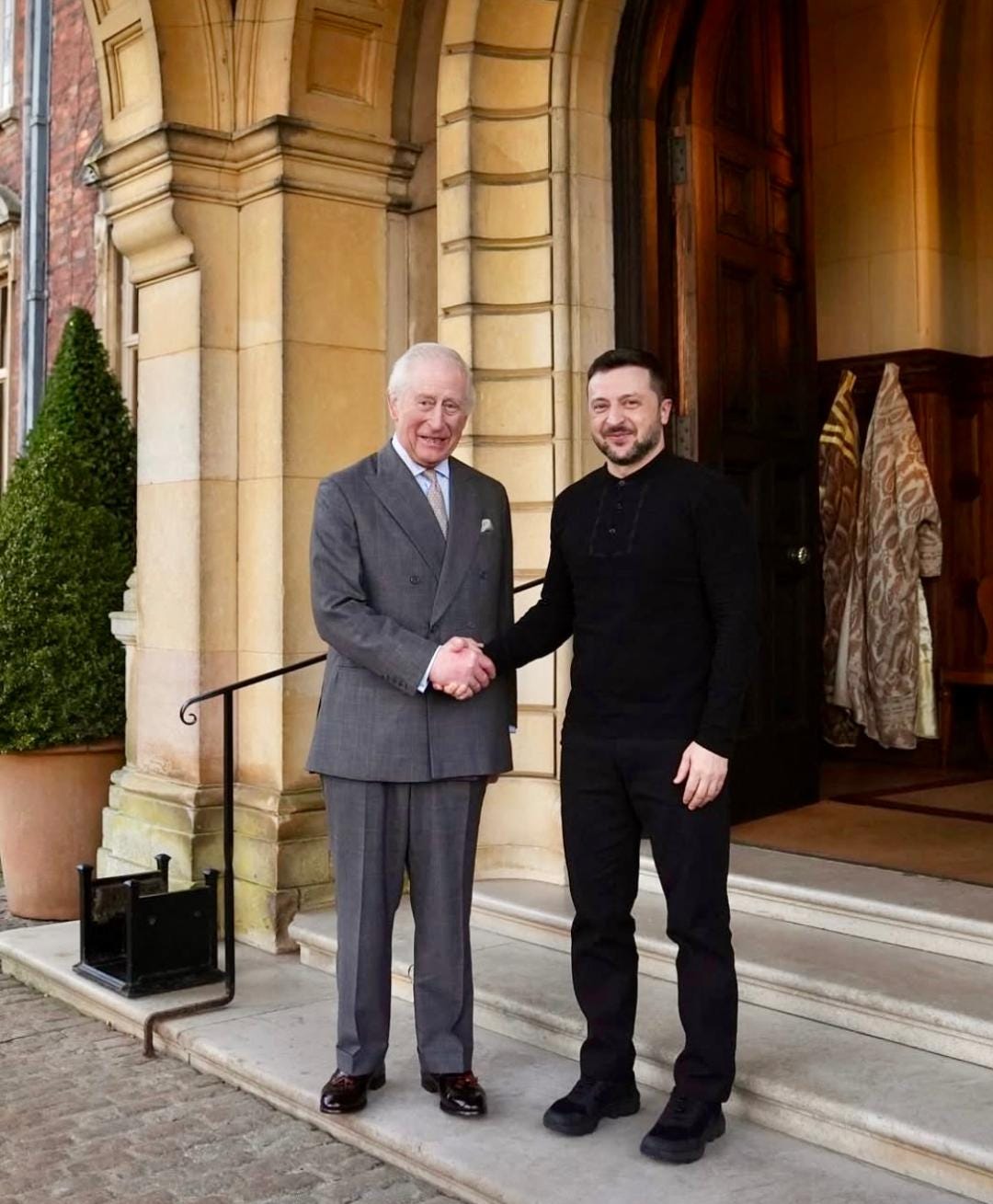The Diplomatic Soft Power of Charles III
To maintain the "Special Relationship" initiated by his grandfather, King George VI, Charles will need to balance his overture to Donald Trump with his support for Ukraine and Canada

A note to Royals Extra subscribers: I will be traveling in the U.K. over the next four weeks to touch base with sources and spend time with my Anglo-American grandchildren. I plan to post on Royals Extra, but the schedule may be irregular. Thank you in advance for your understanding, and for your loyal readership.
For the first time since he took the throne in September 2022 on the death of his mother, Queen Elizabeth II, King Charles III has been trying to help the British government navigate the historic “Special Relationship” with the United States. He has long aspired to be a “convener” and a peacemaker, but he now faces the delicate task of making subtle diplomatic overtures to Donald Trump, whose foreign policy, including his view of Britain, has proved to be unpredictable.
“A great, great gentleman”
When British Prime Minister Sir Keir Starmer made his inaugural visit to the White House to confer with Trump on February 27, he carried a gracious and unusually informal two-page letter from the King inviting the President to Britain for an unprecedented second State Visit. (His first was in June 2019.) As British Foreign Secretary David Lammy, Vice President J.D. Vance, Secretary of State Marco Rubio, and a phalanx of reporters and photographers looked on, he read the letter at once and exclaimed “This is really special. This has never happened before.” He called Charles “a great great gentleman” and said, “The answer is yes…Your country is a fantastic country.”
As an extra gesture of friendship, Charles invited Trump to Balmoral, the royal family’s private retreat in the Scottish Highlands, as well as Dumfries House, also in Scotland, an eighteenth-century estate that he restored and transformed into a center for tourism and education. He described his invitation as a “detour” from Trump’s Turnberry golf resort that “might not cause you too much inconvenience.” He suggested that the Dumfries House “hospitality skills-training for young people” would be of particular interest, since the students “often end up as staff in your own establishments!”
“We will further enhance the special relationship”
The King emphasized the “opportunity to discuss a wide range of issues of mutual interest” while seizing “a valuable chance” to plan the President’s “historic State Visit.” Through “working together, I know we will further enhance the special relationship between our two countries of which we are both so proud.”
Only days later, the warmth of the invitation diminished when Charles held back-to-back meetings with two American allies that Trump had antagonized. The King had a cordial tea with Volodymyr Zelensky two days after the Ukrainian president had been publicly rebuked by Trump in an Oval Office meeting meant to broker a peace agreement to end the grinding war launched by Russian president Vladimir Putin three years ago. Then Charles met with outgoing Canadian Prime Minister Justin Trudeau, the target of repeated insults from Trump, who hit his northern neighbor with punishing tariffs and threatened to annex Canada as America’s “51st state.”
“This is what soft power looks like”
Both signals of solidarity potentially put the King crosswise with the American President, who was reported to be irritated and to have “gone cool” on Britain as a result. But Charles was caught in a Catch-22. He is after all the King of Canada, one of Britain’s fifteen Commonwealth realms that recognize the British monarch as head of state. And his meeting with Zelensky underlined his consistent support for Ukraine as Trump was pressing it to accept Putin’s territorial demands. “His Majesty is very conscious of his responsibility globally, regionally and nationally,” said a Buckingham Palace source. “This is what soft power looks like,” noted a Palace adviser.
While it’s highly unlikely that the deep Anglo-American ties will come undone, the current tensions form a sharp contrast with the origins of those bonds. The term “Special Relationship” was actually coined by Winston Churchill in his famous “Iron Curtain” speech on March 5, 1946, in Fulton, Missouri. Emphasizing the need for close cooperation against aggression by the Soviet Union, he said, “Neither the sure prevention of war, nor the continuous rise of world organization will be gained without what I have called the fraternal association of the English-speaking peoples.” To Churchill, this meant “a special relationship” between Britain and the United States.
“Create a bond of friendship”
That alliance based on shared values, traditions, language, and culture stretched back to the nineteenth century, took root as Britain and America fought together in the First World War, and solidified in the 1930s with the rise of Hitler. The key framers were King George VI and President Franklin D. Roosevelt, beginning in September 1938 when FDR wrote “My Dear King George” a letter inviting the King and Queen to visit the United States. It was the first letter from an American president to a British monarch, written with the expectation, wrote Eleanor Roosevelt, that “the visit would create a bond of friendship” between the two countries.
Circumstances today are vastly different, but it’s worth taking a look at the precedents set by the historic visit by King George VI and Queen Elizabeth to Washington and New York from June 7 to 11, 1939, just three months before the Second World War began. The genuine affection and mutual admiration between the two world leaders set the tone for vital wartime cooperation and a strong bilateral strategic partnership that led to victory over the Axis powers.
“Never have I seen such a crowd”
When the royal couple arrived in Washington on the morning of June 8, 1939, Eleanor Roosevelt wrote, “Never have I seen such a crowd as lined the whole route between Union Station and the White House.” Most Americans had never before seen an actual King and Queen, and more than seven hundred thousand of them turned out to greet forty-three-year-old George and thirty-eight-year-old Elizabeth.

Amid the whirl of activities during the American trip—the garden parties, wreath laying, lunches, dinners, motorcades, briefings, and ceremonies—three extended discussions between FDR and George VI set the seal on their friendship as well as crucial policies that would provide essential support for Britain before the American declaration of war in December 1941. They met initially in FDR’s White House study followed by two conversations in the library at Springwood, the Roosevelt estate in Hyde Park, New York. They spoke, FDR said, “as would any two men at a time of grave world tension.”
Keep reading with a 7-day free trial
Subscribe to ROYALS EXTRA BY SALLY BEDELL SMITH to keep reading this post and get 7 days of free access to the full post archives.




